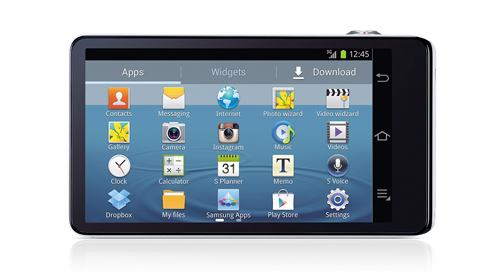Weeks after we ran the update on Nikon’s Android-powered Coolpic S800c, Samsung announced the release of the Galaxy Camera powered by the latest Android Jelly Bean (4.1) OS, compared to the relatively old Gingerbread (2.3) on the Coolpix. The Galaxy Camera is a big step towards integration of the imaging industry with the constantly evolving world of apps, where a photographer will be able to do all the post processing, cloud computing, direct uploads to photo websites etc. on the go, while being able to play games, check out restaurants, and access Twitter at the same time.
The Galaxy Camera is equipped with a 16 megapixels sensor and a 4.77 inch HD Super Clear Touch Display with a resolution of 308 pixels per inch, which will make sure that you won’t have to look for a computer every time you want to review your pictures. It is also equipped with a voice control feature, with the help of which you could command the camera to zoom in, zoom out, click the picture etc. by your voice. The camera can connect through WiFi, 3G, as well as 4Gnetworks, though that might be subject to the markets it is released in. The lens is a 21X zoom, with a focal length range of 23-481 mm. The back panel of the camera also looks like a smartphone, completely free of the traditional compact camera dials and buttons. How well it serves the purpose will only be seen once we get it in our office for review.

As photographers world over have stopped investing in compact cameras as nearly all the high end smartphones these days are equally capable, the Galaxy Camera has an edge over most of its competitors. It encompasses the best of both smartphone and compact camera worlds; you can shoot high quality photographs because of the imaging abilities of the camera as well as upload your photographs on a social network because of the Android OS. There is no doubt that this will start a war of sorts among the imaging and smartphone makers across the world to come out with the best compact/smartphone prototypes, and by the looks of it, the consumers are in for a lot of surprises.

